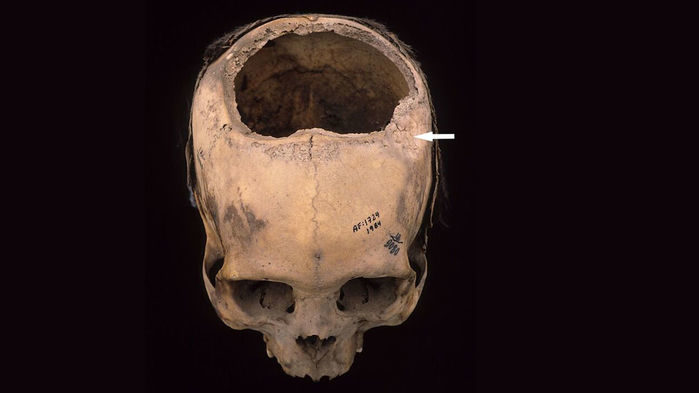
Trepanation likely started as a treatment for head wounds, says David Kushner, a neurologist at the University of Miami in Florida. After a traumatic injury, such surgery would have cleaned up skull fractures and relieved pressure on the brain, which commonly swells and accumulates fluid after a blow to the head. But not all trepanned skulls show signs of head injuries, so it's possible the surgery was also used to treat conditions that left no skeletal trace, such as chronic headaches or mental illnesses. Trepanned skulls have been found all over the world, but Peru, with its dry climate and excellent preservation conditions, boasts hundreds of them.
For the new study, Kushner teamed up with John Verano, a bioarchaeologist at Tulane University in New Orleans, Louisiana, to systematically study trepanation's success rate across different cultures and time periods. The team examined 59 skulls from Peru's southern coast dated to between 400 B.C.E. to 200 B.C.E, 421 from Peru's central highlands dated from 1000 C.E. to 1400 C.E., and 160 from the highlands around Cusco, capital of the Inca Empire, from the early 1400s C.E. to the mid-1500s C.E. If the bone around the surgical hole showed no signs of healing, the researchers knew the patient died either during or very shortly after the surgery. Smooth bone around the opening showed that the patient had survived for months or years after the procedure.
The outcomes were amazing," Kushner says. Just 40% of the earliest group survived the operations. But 53% of the next group survived, followed by 75% to 83% during the Inca period, the researchers report this month in World Neurosurgery. (A shocking 91% of patients survived in an additional sample of just nine skulls from the northern highlands between 1000 C.E. and 1300 C.E.)
Techniques also seemed to improve over time, resulting in smaller holes and less cutting or drilling and more careful "grooving," which would have reduced the risk of puncturing the brain's protective membrane called the dura mater and causing an infection. "What we're looking at is over 1000 years of refining their methods," says Corey Ragsdale, a bioarchaeologist at Southern Illinois University in Edwardsville who wasn't involved in the study. "They're not just getting lucky. ... The surgeons performing this are so skilled." Several patients appear to have survived multiple trepanations; one Inca-era skull showed five healed surgeries.
Kushner and Verano then compared those success rates with cranial surgeries on soldiers in the American Civil War, which used similar methods. Battlefield surgeons also treated head wounds by cutting away bone while trying not to puncture the brain's delicate dura mater membrane. According to Civil War medical records, some 46% to 56% of cranial surgery patients died, compared with just 17% to 25% of Inca-era patients.
Some of the differences in survival rates may be due to the nature of the patients' injuries before the surgery, says Emanuela Binello, a neurosurgeon at Boston University who has studied trepanation in ancient China. "The trauma that occurs during a modern civil war is very different from the kind of trauma that would have been happening at the time of the Incas," she says. Many Civil War soldiers suffered from gunshot and cannonball wounds that were quickly treated in crowded and unsanitary battlefield hospitals, which promoted infections. Still, Binello calls the survival rate of trepanations in Peru "astonishing." "It's a credit to what these ancient cultures were doing," she says.



the yanks have buttheads and/or jugheads.
gp figure!